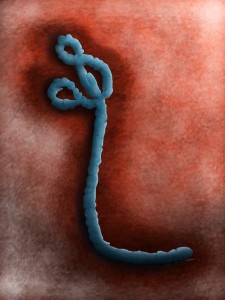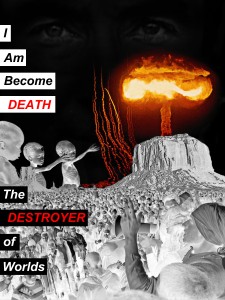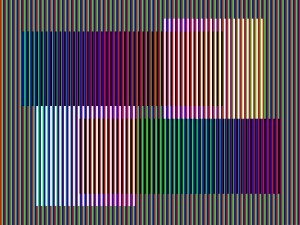Ok, the semester is finally over. I am happy to report that I received a semester GPA of 4.0 this past Fall. Now I’m looking forward to the Spring semester as it brings forth new challenges. For the upcoming semester I am enrolled in 3 classes – Color, Primitive Photography, and Critical Theory. This will bring me in a total of 9 credit hours with 15 contact hours per week. Hopefully I won’t be as frazzled through this upcoming as I was through this past semester.
At any rate, to dig into recent history just a bit, I promised I would share my final Computer Imaging project with everyone. The theme tying these 3 compositions together was science. Science and art, although the practitioners of each discipline think on different levels, are rather intertwined. Art provides the imagination that makes Science possible, while Science provides the materials through which Art can be expressed. The most pertinent evidence to support that theory exists in the fact that the 3 following images were created on a computer. To add further depth, I tried to approach each composition in the way a more well-known artist would approach it. Without further ado, here are the compositions:
This is a digital portrait painting of an Ebola virus. When we don’t really understand something, we often humanize the subject for various reasons. With this particular composition, I attempted to humanize the virus by giving it a formal portrait. The real irony here is that a virus is technically not a living organism. This is the reason for the lighting and texture applied throughout the painting itself. This painting could be a cross between a Mannerist style painting such as those done by Pantormo (elongated form and non-primary color palette) and an early Baroque as done by Caravaggio (recessional lighting and open composition).
This particular piece was driven by the work of Barbara Kruger. Kruger’s work centers mainly on social issues, especially the roles of women, and (in every example I’ve seen) incorporates some sort of text. Here we have the aftermath of the nuclear age that was ushered in by Dr. J. Robert Oppenheimer. Societies throughout history have had to compete with other societies for resources, be they basic (food, water) or more advanced (access to ports, oil). War was often a method of first choice in order to seize the desired resources. The development of nuclear weapons changed the dynamic in the way people think about war. Nation states are now less likely to go to war with other nation states that possess a nuclear capability and more likely to negotiate to further their national interests. People die in war, and the human tendency to violence resulting in warfare could be seen as a natural check on species overpopulation. Since war is less prevalent between members of the “Nuclear Club,” populations have been growing, thereby causing greater strain on increasingly scarce resources. In this composition we think of the spirit of Dr. Oppenheimer looking at his creation. The nuclear blast acts as a camera flash, exposing the scenes of rioting, desertification, and starvation onto film. The pointing upwards all goes back to the spirit of Dr. Oppenheimer.
Finally we have an homage to Carlos Cruz Diez. Cruz Diez continues to work in challenge our perceptions of color. Going back to biology, we perceive color through the rods and cones in our retinas. Everyone perceives color in a slightly different manner, even if those differences are not measurably apparent, because we are all unique. The composition above takes the primary digital triad (Red, Green, Blue – aka RGB) and places white and black vertical lines over top. As it moves from left to right, the distance between each black and white line increases by 1 pixel, causing a shift in the way the color is perceived by the individual. Consider this your warning – the physical reverberations caused by this will make your eyes feel tired after viewing.
Anyway, so there you have it. I’ve been experiment quite a bit with the chromatics, but have put that on hiatus until I start my Color Theory course this next semester. At this point I’m revisiting an old project in order to make my concept more fully realized. I will share it with everyone once I have it complete. As for now, it’s rather late and I’m rather sleepy. Feel free to comment and I wish everyone here a good night.



Leave a Reply